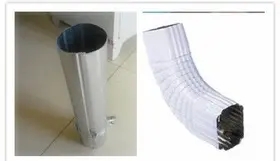
Cold Bending Machine Revolutionizing Metal Fabrication
The world of metal fabrication has experienced transformative advancements over the years, and one such innovation that stands out is the cold bending machine. This versatile equipment allows for the efficient bending, shaping, and forming of metal without the application of heat, making it an essential tool in various industries, including construction, automotive, and manufacturing. Understanding the significance and workings of a cold bending machine provides insight into its crucial role in modern fabrication processes.
How Cold Bending Machines Work
Cold bending machines operate on the principle of deforming metal under mechanical stress at room temperature. These machines use hydraulic or mechanical systems to apply force, bending the metal into the desired shape without compromising its structural integrity. The process is carefully controlled to prevent cracking or permanent deformation of the material. Typically, cold bending is employed for materials such as steel, aluminum, and other metals that are ductile and capable of undergoing significant deformation before failure.
Cold bending machines come in various types, including section benders, pipe benders, and angle benders, each tailored to specific applications. Section benders are particularly versatile, allowing for the bending of various cross-sectional shapes, while pipe benders are designed explicitly for creating curves in tubular materials, essential for plumbing and HVAC systems. Angle benders focus on bending materials at preset angles, a crucial requirement in structural applications.
Advantages of Cold Bending
One of the primary advantages of using a cold bending machine is the preservation of material properties. Bending metal at room temperature helps maintain its strength, durability, and fatigue resistance compared to processes involving heat. This characteristic is particularly beneficial in applications where structural integrity is paramount, such as in the construction of beams, columns, and frameworks.

Additionally, cold bending is energy-efficient. Unlike hot bending processes, which require extensive energy input for heating materials, cold bending minimizes energy consumption, leading to lower operational costs. The absence of heat also means that there is no need for additional cooling processes, simplifying the overall workflow and enhancing productivity.
Moreover, cold bending machines provide a high degree of precision and repeatability. Modern machines come equipped with advanced controls and automation systems, allowing for consistent results in mass production settings. This level of precision is vital in industries where exact measurements and tolerances are crucial, such as aerospace and automotive manufacturing.
Applications in Various Industries
Cold bending machines find applications across a plethora of industries. In construction, they are used to create intricate architectural designs and support structures. In automotive manufacturing, cold bending allows for the production of components such as chassis and frames, which require specific shapes and strengths. Additionally, in the furniture industry, these machines aid in crafting elegant designs from metal, enhancing both aesthetics and functionality.
The expanding capabilities of cold bending machines also foster innovations in design and engineering. As industries push the boundaries of what is possible with metal fabrication, cold bending machines stand at the forefront, enabling the production of complex components that were once deemed impossible.
Conclusion
In conclusion, the cold bending machine represents a remarkable advancement in the field of metal fabrication. Its ability to bend and shape metal accurately and efficiently, while preserving material properties, makes it an indispensable asset in various industries. As technology continues to evolve, these machines will undoubtedly play a pivotal role in driving further innovations and improvements in metalworking processes, shaping the future of manufacturing and construction. Whether in creating robust structures or intricate designs, cold bending machines help bring visions to reality, one bend at a time.